The first page opened with an article titled "THE INDIAN TRAINING SCHOOL," that described the progress of the school, its Christian methods, the work of the former Ft. Marion prisoners of war preparing buildings for use, the importance of the town Sunday Schools, the school curriculum that emphasized farmwork for boys and housekeeping for girls…
Newspapers
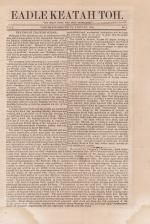
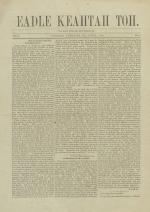
Page one opened with a teacher identified as A.J.S. (Alfred J. Standing) reminiscing about his time teaching Native Americans before he came to Carlisle. Also on the page was an article signed by "G. Le R. B." (George Le Roy Brown) on the civilization of the Indians, comparing it to the conquests of the Roman Empire and its assimilation of less…
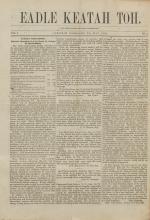
Page one opened with information, including statistics, from the Annual Report of the Commissioner of Indian Affairs about Carlisle and other schools as reported by Indian agents. Page two contains more arguments for, and accounts of support for, educating Indian youth. The article "Our Dining Hall" describes the physical space, the work the…
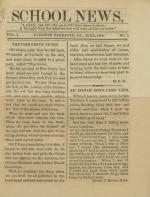
The first article by M. D. P. [Mason D. Pratt] describes a field trip to an iron forge near Pine Grove, followed by a picnic at the grove with the students, teachers, visiting chiefs, the college band and some invited guests. “An Indian Boy's Camp Life,” by Henry C. Roman Nose, gives a short account of his activities growing up. An "Editorial"…
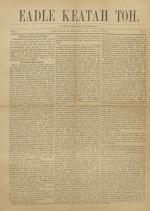
Page one had an article on the benefits all children of the Sioux Nation receive from the agency, and how adult should have the opportunity to learn English as well. There was statistics on the number of children attending, and the ratio of boys to girls. Page two had a piece about the student’s reaction to a camping trip. Many of them reacted…
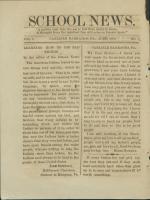
The first article is by John Downing (Cherokee), titles “Learning How to Use Bad Things.” In which he writes about alcohol and the benefits of being nice to the people of the United States, and a letter from Moses Nonway to his mother asking on the health of his people and reflecting on their poverty. The next page contained a list of small…
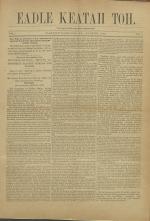
Page one had a report on a bill that would “increase educational privileges and establish industrial schools for the benefit of youth belonging to such nomadic Indian tribes as have educational treaty claims upon the United States.” It also talked about the creation of the Carlisle Industrial Indian School as support of this bill. Page two had…
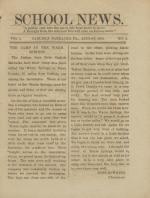
An excursion to Warm Spring opened this edition, titled “The Camp at the Warm Springs” by John Downing (Cherokee). They hiked all day until they reached the Springs, picking black berries along the way and at one point believing they had gotten lost. This proceeded an editorial on the benefits of sending Indian children to school, which was…
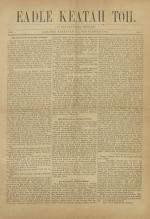
Page one opened with the discovery of a Cherokee tribe in the mountains of South Carolina and how they begged for teaches when the white travelers passed through their village. The Indian bow and white man musket were also compared on page one, with the bow being determined to be the superior weapon. It also described an Indian Buffalo hunt,…
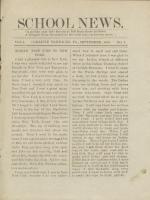
The opening piece was written by Roman Nose, titled “Roman Nose Goes to New York,” and it tell of his trip to New York City, visiting the Equitable Life Insurance Building and the aquarium, and the follows few weeks after his trip. He was one of the students who went on the Warm Springs trip mentioned in the previous issue. The following page…
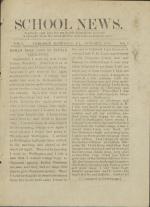
The fifth issue opens with Roman Nose describing his trip back to Indian Territory and his reunion with his family. While there he expresses his enjoyment of the school and the benefits of education, eventually convincing the chiefs to sends twenty-one Cheyenne children and Ten Arapahoe children with him to Carlisle. The article continues onto…
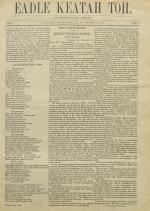
Page one had a report on the first year of operation of the Carlisle Industrial School, mentioning when students arrived, how many and where from. Also it described several trades the students were learning what how they were learning them. Page two had information about the Menomonee Agency and how more children were brought to Carlisle from…
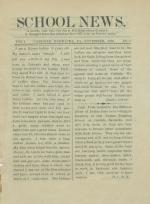
The first page has a short narrative from Joshua Given (Kiowa) on how he went from living in Indian Territory to studying at Carlisle and a brief paragraph from H.C. Roman Nose on how well and enthusiastically the students are learning. The editorial was about how smart Indians started to learn how to live like white men, and how thankful the…
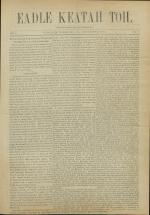
Page one started with an explanation for why boarding schools are necessary to successfully educate Indian children. It was explained that day school simply “do not withdraw the pupils from the influences of their home surroundings in such a manner us to facilitate a change in their habits of daily life.” Page two had a piece on the “Oklahoma…
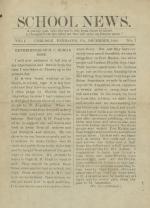
Issue Seven opens with Roman Nose explaining how he came to Carlisle after being held captive in St. Augustine for three years. He explains his time there was good because of the kindness of Capt. Pratt. After the editorial about the benefits of speaking English, there was a small letter from a Sioux boy named Phillip, to show how “large boys…
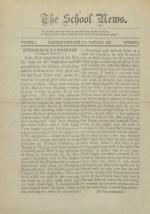
Issue Eight opens with a continuation of Henry C. Roman Nose’s journey from St. Augustine, to New York city and eventually Tarrytown, New York. The next page was an editorial on the importance of Hard Work, and how Indians should strive to work hard like White men do, along with a series of little blips about the school, including the arrival…
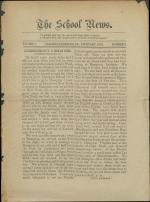
Issue nine, continues Roman Nose’s story, showing him attending Hampton School and eventually traveling to Lee, Ma. This issue’s editorial featured a piece on the hopes that the new U.S. President Garfield will put all Indian children in school. On the same page Robert W. Stewart (Creek) wrote about George Washington’s birthday. A bit about…
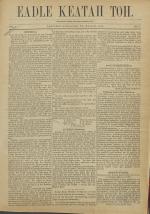
[Note: Although the front page gives the date of printing as March 1880, this issue came out in March 1881.]
Page one had a list of requests to the United States President from W. E. Dodge, Howard Crosby, John Hall, S. M. Moore, W m. C. Gray, S. It. Riggs, and T. M. Sinclair, making several requests, such as asking for titles to their…
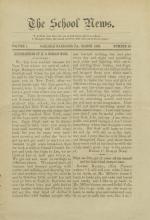
It opens with the conclusion to Roman Nose’s long journey to Carlisle. He explained how at Lee he learned to mow with a scythe and milk cows, before travelling to Carlisle Barracks, where he was happy to see other Indians following the “white man’s way”. Also on the first page is a small bit from Sophie Rachel (Nez Perces) on how she learned to…
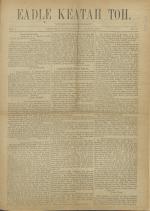
Page one opened with a letter to Carlisle from “An Old Soldier” who had been stationed at the Carlisle Barracks forty years earlier. There were also three other letters to residents of the school from Peter Primaux, Paul C.T., and Arizona Jackson. The rest of the page was one to two sentence long excerpts from letters from students. Page two…
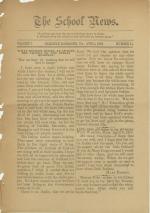
The opening article was written by Michael Burns (Apache), and focused on “The Indian Question.” In it he explains how many Indians falsely believe that white men are wiser simply because they are born white, and argues that their wisdom comes not from their skin color, but from more easily accessed education. The second page gives some…
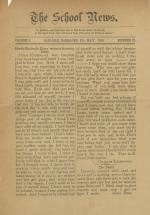
Number 12. Opened with a letter from Charles Kauboodle (Kiowa) to his cousin Laura, talking about what they’ve learned in school, their family, and wishing her a quick recovery from the sickness she has. Jessa Bent also had a few sentences on the desert published at the bottom of the page. The next page has a piece titled “Peace” about the hope…
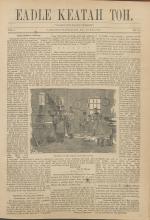
Page one opened with the methods and various uses of ground corn, from sweetening water, to making traveling bread. There was also a letter from Jno D. Miles, and another from Minerva Cheyenne. One article on creating competition between the Arapahoe and Cheyenne. Page two opened with the story of D.L. Payne, who used military force to remove…
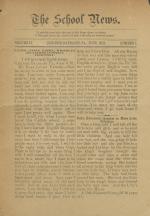
Page one opens with a letter from Lucius Aitson (Kiowa) to his father describing an illness he had that left him bed ridden for two weeks and how fond her is of English. Also on this page is a short bit from Nellie Robertson (Sioux) about the story of Moses. The next page had an article titled “A Little History of the Pawnee” by paper editor…
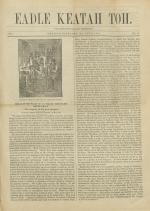
Page one opened with a piece titled “The Future of the Red Indian,” reprinted from the London Spectator. This interesting article begins with the author describing the activities of the Carlisle Indian School for a British audience before then discussing his reaction to seeing photographs from the school. The second page had the report…
